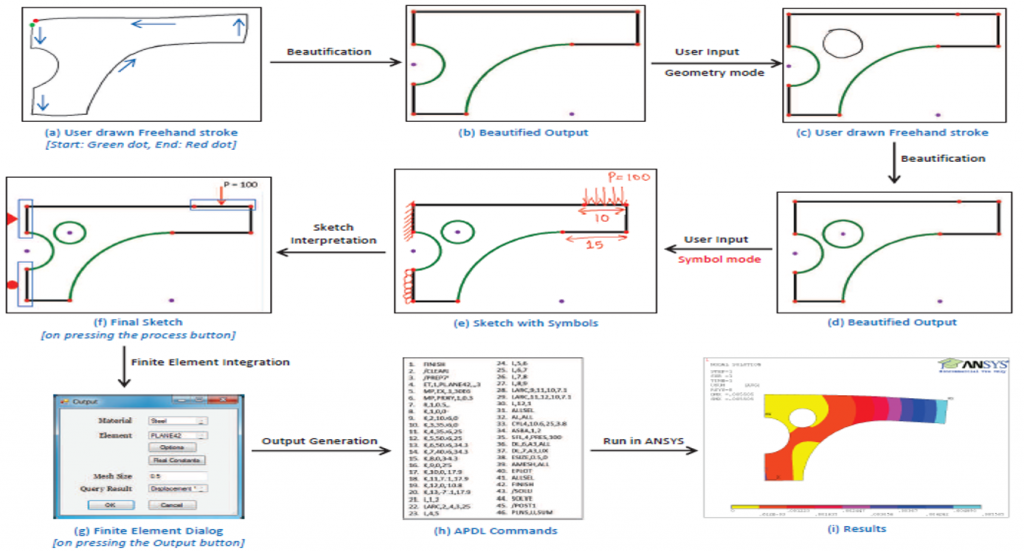Freehand sketching is an integral part of early design process. Recent years have seen an increased interest in supporting sketching in computer-based design systems. In this paper, we present finite element analysis made easy (FEAsy), a naturalistic environment for static finite element analysis. This tool allows users to transform, simulate, and analyze their finite element models quickly and easily through freehand sketching. A major challenge here is to beautify freehand sketches, and to this extent, we present a domain-independent, multistroke, multiprimitive method which automatically detects and uses the spatial relationships implied in the sketches for beautification. Further, we have also developed a domain-specific rules-based algorithm for recognizing commonly used symbols in finite element analysis (FEA) and a method for identifying different contexts in finite element modeling through combined interpretation of text and geometry. The results of the user study suggest that our proposed algorithms are efficient and robust. Pilot users found the interface to be effective and easy to use.


